Protein
Food label claims for protein foods.
Protein Food Labels Overview
Food label claims on meat, poultry, egg, seafood, and other protein products can vary significantly, and a single food label may have numerous voluntary claims to differentiate the product from competitors’ versions. Meat, poultry, and egg labels often contain far less information about the contents of the food than other processed food labels.
Most meat, poultry, and egg products are regulated by USDA. Unlike FDA, USDA requires preapproval of label claims and also requires routine USDA inspection of meat and poultry products prior to sale through their Food Safety and Inspection Service (FSIS). The FSIS also monitors state inspection of meat and poultry sold within the state it was produced. State standards must be at least as strict as federal standards.
FDA regulates the sale of seafood, ensuring the safety of both domestic and imported products. FDA also establishes the labeling standards for seafood. Plant-based proteins are primarily regulated by FDA because they are made of grains and vegetables. However, plant-based products may also fall under USDA regulation if, for example, they are marketed as “organic.” Explore the protein categories on the following tabs and the label claims below to understand the meaning of these statements.
A) Required Information
Safe Handling Instructions: USDA requires safe handling instructions on a product label if the meat or poultry component of the product is raw or partially cooked, and if the product is destined for household consumers or institutional uses. These instructions help ensure that consumers cook and handle food properly in order to avoid foodborne illnesses. The text must read as follows:
This product was prepared from inspected and passed meat and/or poultry. Some food products may contain bacteria that could cause illness if the product is mishandled or cooked improperly. For your protection, follow these safe handling instructions:
-
-
- Keep refrigerated or frozen. Thaw in refrigerator or microwave.
- Keep raw meat and poultry separate from other foods. Wash working surfaces (including cutting boards), utensils, and hands after touching raw meat or poultry.
- Cook thoroughly.
- Keep hot foods hot. Refrigerate leftovers immediately or discard.
-
Country of Origin Labeling Claims (COOL): COOL is a labeling law requiring retailers to notify customers about the source of different foods. USDA requires retailers to label products made from “muscle cuts and ground lamb, chicken, goat, wild and farm-raised fish and shellfish” to identify the product’s country of origin. Most grocery stores and supermarkets are required to label food with the country of origin. See this Q&A website from the AMS or USDA’s country of origin labeling (COOL) regulations for more information.
B) Voluntary Claims
Animal Raising Claims: For most animal raising claims, such as “cage-free” or “humanely raised,” producers typically need to provide documentation to support or substantiate the claims. This usually includes:
- A detailed written description explaining the controls used for ensuring that the raising claim is valid from birth to harvest, or the period of raising being referenced by the claim;
- A signed and dated document describing how the animals are raised (e.g., vegetarian fed, raised without antibiotics, grass fed), to support that the specific claim made is truthful and not misleading;
- A written description of the product tracing and segregation mechanism from time of slaughter or further processing through packaging and wholesale or retail distribution;
- A written description for the identification, control, and segregation of nonconforming animals or products; and
- If a third party certifies a claim, a current copy of the certificate.
See labeling guidance for more information on animal raising claims.
Food Label Claims for Protein Foods
The term “certified” may mean that the FSIS or the AMS has “officially evaluated a meat product for class, grade, or other quality characteristics (e.g., “Certified Angus Beef”).” The term may also be used when referring to a third-party, nongovernmental certifying body. In that case, the term must be closely associated with the organization’s name or seal.
This label claim is independently verified by A Greener World. It generally indicates that animals were raised at independently owned pasture-based farms. There are specific requirements for obtaining this certification based on the animal in question. For example, this certification prohibits feedlots for beef cattle, prohibits hot branding, and requires that they have continuous pasture access whenever the welfare of the animal would not otherwise be affected. Specific requirements for different types of animals and more information may be found here. You can also read more about different animal welfare certification programs in the Farm Animal Welfare Certification Guide: A Farmer and Business Tool for Understanding Welfare Certification Programs.
This term is not allowed to be used on a label. See this FSIS website for more information.
Neither FDA nor USDA have defined the term “cruelty free.” However, labels bearing this claim require FSIS approval and may not be misleading. Though this term is not often used to describe food, several industry and advocacy groups have sought guidance on this claim for future use on cell culture-based meat products, also known as “lab-grown meat.” FSIS guidance has indicated that cell culture-based meat products will be considered a meat or poultry product and be subject to FSIS regulation. Without specific regulations from FDA or USDA, cell-based meat products using this claim will likely need to prove that their claim is not misleading to gain FSIS approval.
Certified Humane
The meaning of this claim varies depending on the animal. Compliance is not verified by either USDA or FDA, but is verified through third-party, nongovernmental auditing from Humane Farm Animal Care. In general, “certified humane” certification signifies the animals have ample space to roam, access to fresh water and a healthy diet free of antibiotics and hormones, continual outdoor access, and producers have complied with a set of animal-specific standards. Certified humane farms are subject to inspections from Humane Farm Animal Care, and must use certified humane slaughter facilities as well. Feedlots are permitted to be certified humane, so long as they comply with requirements for space, dry mounds, sun shades, wind breaks, and drainage slopes. Certified humane standards vary based on the animal in question, and more information may be found here.
Raised with Care or Humanely Raised
The FSIS will only approve a claim if a statement is provided on the label showing ownership and including an additional explanation of the meaning of the claim for consumers. This additional explanation should set out how the producer has interpreted “humane.” An example of a “raised with care” explanation might include whether the animal was raised outdoors on pasture or whether the animal has been physically altered (no tail docking or teeth clipping, for example). These terms may also refer to third-party certification standards. More information on humane claims can be found here.
All-Natural/Natural
This claim has not been defined by USDA. However, according to a policy developed by FDA, it generally means that the product is free of artificial ingredients or added colors and has been minimally processed. Minimal processing means that the product was processed in a way that has not fundamentally changed the product. If a producer chooses to use this term, the label must include a statement explaining how the producer has defined the term. For example, the label must say “no artificial ingredients” or “minimally processed.” In short, no “food that would not normally be expected to be in that food” has been added. A “natural” label claim does not relate to raising conditions.
Naturally Raised
USDA has previously defined this claim to mean that the animals used for these products were raised entirely without growth promotants or hormones and have never been fed antibiotics, except to treat disease. Producers seeking to use the claim “naturally raised” must obtain preapproval from the USDA-FSIS to ensure that it is not false or misleading. However, the AMS no longer provides certification for naturally raised claims because they could not guarantee that AMS standards would meet FSIS standards.
USDA does not have a definition for this claim, but it is generally used to mean products produced in a way that promotes environmental responsibility, public health, animal welfare and/or societal and economic well-being. Like other animal welfare claims, there is no precise standard for “sustainably produced” animal products. The FSIS requires producers using this claim to include a statement on the label showing both the name of the entity establishing the relevant standard and additional terminology explaining the meaning of the claim to consumers. If the producer or certifying entity has a website further explaining how the claim is defined, they may link to the website in lieu of an explanation on the label. If a producer is including a third-party certification on the label, the label should declare the certifying entity’s name, website address, and logo.
Additional Resources
Basics of Meat and Poultry Food Labeling
This user-friendly guide offers food companies an overview of meat, poultry, and egg product food labeling. Written by USDA, this guide is meant to assist food companies with labeling basics, compliance tips, and miscellaneous requirements to follow.
FSIS Raising Claim Guidelines
This guide offers meat and poultry establishments an overview of required supporting documents for labels that contain various animal raising claims. Written by the Food Safety and Inspection Service (FSIS), this guide is meant to help meat and poultry establishments determine what supporting documentation is needed for respective animal raising claims.
Animal Welfare Certification Guide
Many protein labels make statements about animal raising and care standards. You can find more information about animal welfare certifications in this guide developed by CAFS and the ASPCA.
Animal Processing and Labeling
This Food Insight post details animal agriculture processing laws and what different meat labels mean. Food Insight also offers a “USDA Meat Grading Basics” infographic categorized by beef, poultry, pork, lamb, and veal labeling standards.
USDA Food Standards and Labeling Policy Book
Prepared by USDA, this policy book exhaustively defines truthful food product labels in dictionary form to help manufacturers avoid misleading labeling.
Beef and Pork Labels Overview
Beef and pork products are largely regulated by the USDA Food Safety Inspection Service (FSIS). The FSIS has the authority to regulate meat from “amenable species” which includes meat from animals like lamb, goat, and mule. USDA’s Agricultural Marketing Service (AMS) offers a fee for service inspection of other meat as well, like elk, deer, rabbit, and bison. Many of the claims below relate to raising claims and the diet fed to animals prior to slaughter. Some terms are regulated very specifically, like organic. Other terms, like pasture-raised are not specifically defined and allow for more flexibility. Explore the label claims below to gain a better understanding of common label claims on beef, pork, and other meat products.
Interactive Label
Grass-Fed
“Grass-fed” claims may only be applied to meats from cattle that were solely fed grass from the time that they were weaned off their mother’s milk. Their diet must come from forage (“[f]orage consists of grass (annual and perennial), forbs (e.g., legumes, brassicas), browse, or cereal grain crops in the vegetative (pre-grain) state”), and the animals may not be fed any grain or grain byproduct throughout their lives. Other acceptable feed sources include hay, haylage, baleage, silage, and crop residue without grain. The animals must have continuous access to pasture during the growing season until slaughter, meaning that 100 percent grass-fed animals will never have been confined to a feedlot. If animals have less than 100 percent access to grass or forage, a label must reflect that (e.g., “made from cows fed 90% grass and 10% corn”).85% Lean 15% Fat
On single-ingredient raw meat and poultry products like ground beef, a label may contain a statement of the proportion of lean meat versus fat content (e.g., 80% lean 20% fat). A meat product that does not meet the statutory definition of “low fat” may only include a “lean percent” statement if it also includes a “fat percent.”USDA Certified
USDA also requires routine inspection of meat and poultry products prior to sale through their Food Safety and Inspection Service (FSIS). The FSIS monitors state inspection of meat and poultry sold within the state it was produced.Vermont Certified Organic
This term means that a product has been produced according to the standards in the Organic Foods Production Act (OFPA) and certified by a state organic program. States may have their own organic program that functions like the USDA organic program. State organic programs must have the same requirements as the USDA organic program, but may also impose higher standards.No Antibiotics
The term “no antibiotics added” may be used if sufficient documentation is provided by the producer to the FSIS demonstrating that the animals were raised without antibiotics. In some cases, consumers may also see claims about “no subtherapeutic administration” of antibiotics to an animal. This indicates that antibiotics may have been administered to the animal at some point, but only for the purpose of treating an illness, and this circumstance must be specified on the label. An example of subtherapeutic administration labeling might say: “No subtherapeutic antibiotics. Animals do not receive antibiotics on a daily basis; animals only receive antibiotics in the case of illness.”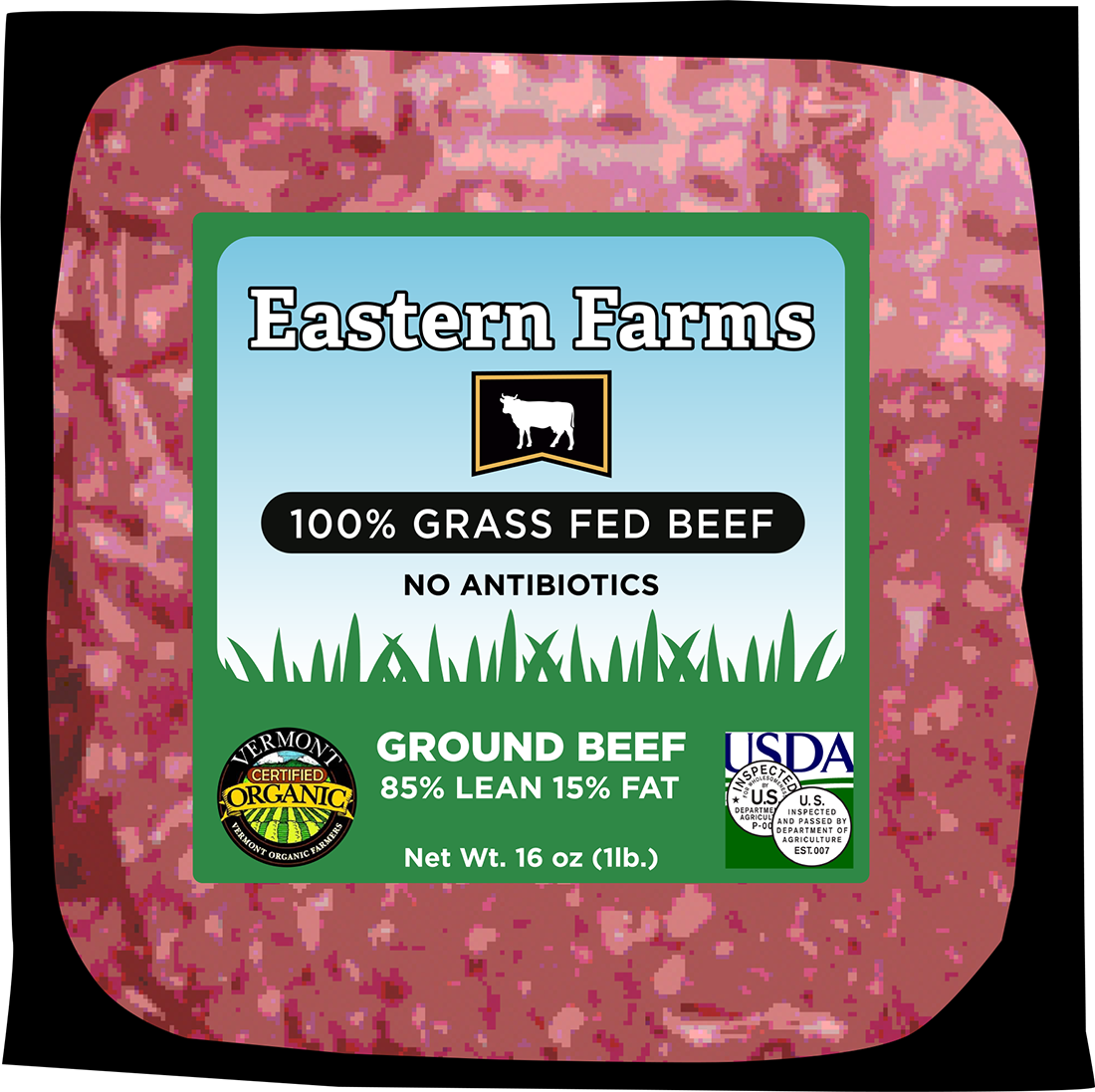
Beef & Pork Label Claims
“Grass-fed” claims may only be applied to meats from cattle that were solely fed grass from the time that they were weaned off their mother’s milk. Their diet must come from forage (“[f]orage consists of grass (annual and perennial), forbs (e.g., legumes, brassicas), browse, or cereal grain crops in the vegetative (pre-grain) state”), and the animals may not be fed any grain or grain byproduct throughout their lives. Other acceptable feed sources include hay, haylage, baleage, silage, and crop residue without grain. The animals must have continuous access to pasture during the growing season until slaughter, meaning that 100 percent grass-fed animals will never have been confined to a feedlot. If animals have less than 100 percent access to grass or forage, a label must reflect that (e.g., “made from cows fed 90% grass and 10% corn”).
Producers must provide documentation to the FSIS verifying animals’ diets in order to use this claim, including a detailed description of the feed formulations and declarations that the animal received no grain or grain product from the time they stopped drinking milk until slaughter or until their milk product was collected for sale. More information may be found here.
The AMS recently revoked grass-fed verification for most producers, except statutorily defined “small farms.” Small farms may receive “grass-fed” certification through the USDA Process Verified Program―a voluntary program offered by USDA. Using this method, a USDA-AMS auditor conducts an on-site inspection of the farm’s agricultural process or processes to determine sufficient compliance with USDA-regulated raising claims, including “grass fed.” All other producers may develop their own grass-fed standards, which can be verified by the AMS. A copy of the previous standard remains on the AMS website for reference. However, the AMS will no longer verify that an applicant’s program meets the standard.
This term means that a product has been produced according to the standards in the Organic Foods Production Act (OFPA) and certified by USDA’s National Organic Program or a state organic program.
A label may only use the “USDA Organic” seal if the food is actually certified organic. However, a package may still note which ingredients, or percent of ingredients, are USDA organic. States may have their own organic program that functions like the USDA organic program. State organic programs must have the same requirements as the USDA organic program, but may also impose higher standards.
Organic products are grown and processed according to federal standards on soil quality, pest and weed control, and use of chemical fertilizers, among other areas. Organic meats are derived from animals raised on organic feed and in compliance with USDA animal care standards. Animal care standards include providing access to pasture and not using unnecessary antibiotics or added growth hormones. Additionally, the use of genetically modified organisms (GMOs) is “prohibited in organic production or handling.”
The amount of organic ingredients included in a food matters for labeling. A 100 percent organic product may only have ingredients that are organic. A food that has at least 95 percent organic ingredients may have the term “organic” on its label, if the organic ingredients are specifically noted somewhere on the package. If the product has at least 70 percent organic ingredients, the package may use the term “organic” to list the specific qualifying ingredients, but may not use the USDA Organic seal. Foods with organic ingredients, but which are less than 70 percent organic, may only use the term “organic” in the ingredient list or the percentage of organic ingredients. For more information on organic ingredient labeling, see the USDA Organic Labeling Standards website.
Choice meat is high quality, but has less marbling than prime meat. Steaks from the loin or rib are typically choice meat. These are the cuts you would typically find in a grocery store. See more information on this AMS website.
Grades are distributed by the USDA Agricultural Marketing Service. They are voluntary, and the service is requested and paid for by meat and poultry producers and processors. Grades can refer to quality or yield. Quality grades, which consumers are more likely to see in the store, deal with the tenderness, juiciness, and flavor of the meat (see Prime, Choice, and Select). Yield grades deal with usable meat from the carcass of an animal, measured on a scale from 5 to 1. A grade of 1, the highest grade, indicates the greatest ratio of lean meat to fat (more meat, less fat).
On single-ingredient raw meat and poultry products like ground beef, a label may contain a statement of the proportion of lean meat versus fat content (e.g., 80% lean 20% fat). A meat product that does not meet the statutory definition of “low fat” may only include a “lean percent” statement if it also includes a “fat percent.” See this FSIS notice for more information.
Beef, cattle, swine, and lamb may be raised using additional hormones. Terms like “no hormones added,” “raised without hormones,” and “raised without steroids” may be used if the producer submits specific documentation to the FSIS. Documentation must establish that the producer has effective “controls for ensuring the animals are raised without hormones or steroids,” a written description of raising standards, and a written description of how the producer keeps the animals and meat separate from other products.
In some cases, hormones or antibiotics may also be given to an animal to aid in gestation. For offspring of these animals the hormones and antibiotics were administered before birth, so a label for that animal product may still read “raised without added hormones,” “no added hormones administered,” etc. See these USDA labeling guidelines for more information.
The term “no antibiotics added” may be used if sufficient documentation is provided by the producer to the FSIS demonstrating that the animals were raised without antibiotics. In some cases, consumers may also see claims about “no subtherapeutic administration” of antibiotics to an animal. This indicates that antibiotics may have been administered to the animal at some point, but only for the purpose of treating an illness, and this circumstance must be specified on the label. An example of subtherapeutic administration labeling might say: “No subtherapeutic antibiotics. Animals do not receive antibiotics on a daily basis; animals only receive antibiotics in the case of illness.” See this FSIS website on labeling terms for more information.
The term “organic” means that a product has been produced according to the standards in the Organic Foods Production Act (OFPA) and certified by USDA’s National Organic Program. A label may only use the “USDA Organic” seal if the food is actually certified organic.
Organic products are grown and processed according to federal standards on soil quality, pest and weed control, and use of chemical fertilizers, among other areas. According to USDA, “[o]rganic producers rely on natural substances and physical, mechanical, or biologically based farming methods to the fullest extent possible.”
The amount of organic ingredients in a food matters for labeling. A “100 percent organic” product may only have ingredients that are organic. A food that has at least 95 percent organic ingredients may have the term “organic” on its label if the organic ingredients are specifically noted somewhere on the package. For more information on organic ingredient labeling, see the USDA Organic Labeling Standards website.
This claim is not defined by USDA. The term suggests that the animal was raised outside or on pasture, but because there is no legal definition of this term, it can mean what the producer suggests it does, so long as the claim is not misleading. USDA requires documentation and additional terminology to define its meaning on the label. Documentation must show that the animal has continuous free access to the outdoors for the animal’s usual grow-out period. For ruminants like cows, this means the entire grazing season for the geographical area. See these USDA labeling guidelines for more information.
This is a voluntary grade to describe the quality of meat. Prime is the highest grade of quality and is generally sold in hotels and restaurants. The USDA describes prime grade meat as coming from young, well-fed beef cattle. The meat tends to have abundant marbling or strands of fat throughout it. Prime meat is ideal for dry heat cooking such as broiling, roasting, or grilling. See more information on this AMS website.
Select grade meat is very uniform in quality and is leaner than higher grades. It has less marbling than choice and prime meats, and is generally less flavorful. See more information on this AMS website.
Poultry and Egg Labels Overview
Poultry and egg products are regulated mostly by USDA through the Poultry Products Inspection Act (PPIA) and the Egg Products Inspection Act (EPIA). FDA may also regulate certain parts of egg labeling, and has primary authority over eggs in their shells (shell eggs). Explore the various label claims below to learn more about poultry and egg labeling.
Required Label Information
- Safe Handling Instructions: FDA requires most shell eggs to include safe handling instructions, which state, “SAFE HANDLING INSTRUCTIONS: To prevent illness from bacteria: keep eggs refrigerated, cook eggs until yolks are firm, and cook foods containing eggs thoroughly.”
- Egg Size Designation: Egg sizes are classified as Jumbo, Extra Large, Large, Medium, Small, or Pee Wee. All shell eggs that include the USDA grademark on the label must include the size of the egg.
Interactive Label
Cage Free
For eggs to be “cage free,” producers must meet the same standards as for “cage-free” poultry. Additionally, producers have access to a voluntary program through USDA called the Quality Assessment Division (QAD) which provides grading and certification services. Not all “cage-free” eggs need to be evaluated by the QAD because the QAD is a voluntary program. However, if the producer uses the USDA logo, then “QAD assesses whether claims are appropriate and verifiable.” To verify the claim, the QAD conducts yearly on-site inspections. For information on USDA egg labeling visit this post on the USDA blog.All Natural
This claim has not been defined by USDA. However, according to a policy developed by FDA, it means that the product is free of artificial ingredients or added colors and has only been minimally processed. If a producer chooses to use this term, the label must include a statement explaining how the producer has defined the term. For example, the label must say “no artificial ingredients” or “minimally processed.” In short, the FDA's position is that manufacturers do not add anything to natural foods "that would not normally be expected to be in that food." A “natural” label claim does not relate to raising conditions.Hormone Free
USDA does not permit the use of hormones in poultry. Consequently, this claim cannot be used on a label unless it is accompanied by language stating that “federal regulations prohibit the use of hormones” or some other qualifying language approved by the agency. USDA provides more information on its website.Non-GMO
“GMO” stands for “genetically modified organism.” There are no USDA or FDA regulations that specifically define “GMO.” However, both agencies have informal guidance and interpretations on using the term “non-GMO.” USDA defines “genetic modification” as “[t]he production of heritable improvements in plants or animals for specific uses, via either genetic engineering or other more traditional methods.” The FSIS (part of USDA) now allows certified organic meat and poultry products to include a “non-GMO” label claim because GMOs cannot be certified organic. Non-organic poultry and eggs may still be able to use the term “non-GMO” if the animal was fed a GMO diet because the feed does not change the animal’s DNA. Additionally, FDA has not recognized any animal products available for purchase as GMOs (except for one kind of salmon). Third-party certifiers (e.g., the Non-GMO Project) may have a set of standards for certifying non-GMO products. Beginning in 2022, certain foods produced using bioengineering under the National Bioengineered Food Disclosure Standard will need to be specifically labeled. Most poultry and egg products will not require disclosure under this standard. See this issue brief for more information.Local
The USDA National Agricultural Library defines “local” as “the direct or intermediated marketing of food to consumers that is produced and distributed in a limited geographic area.” However, USDA notes that there is no specific distance that defines whether a product is local. Like all label claims, the term “local” cannot be used in a misleading way. So, a food that is labeled as “local” should have come from a relatively close geographic region, but may also come from anywhere within the same state.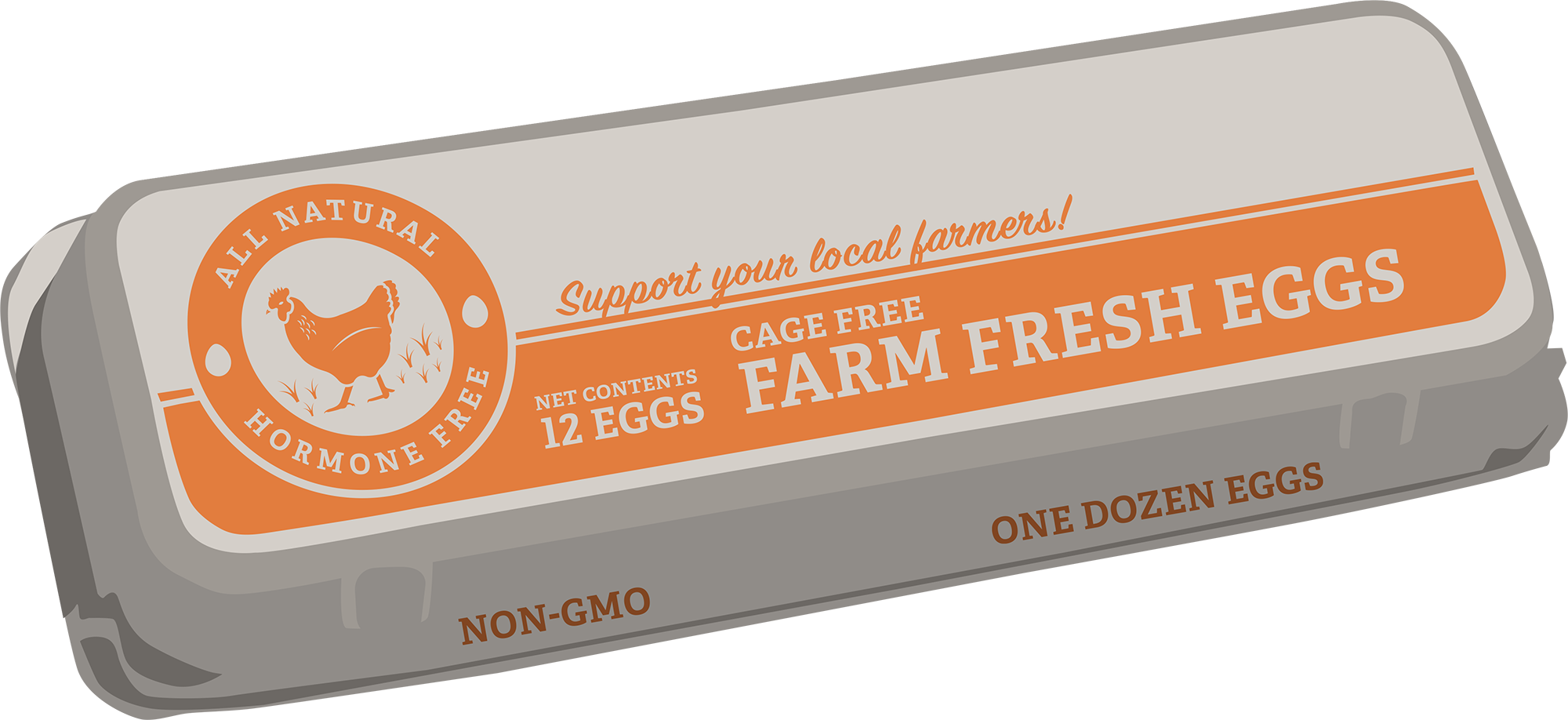
Poultry & Eggs Label Claims
The claims “all natural” or “natural” have not been defined by USDA. However, according to a policy developed by FDA, it means that the product is free of artificial ingredients or added colors and has only been minimally processed. If a producer chooses to use this term, the label must include a statement explaining how the producer has defined the term. For example, the label must say “no artificial ingredients” or “minimally processed.” In short, the FDA’s position is that manufacturers do not add anything to natural foods “that would not normally be expected to be in that food.” A “natural” label claim does not relate to raising conditions.
Cage-Free Eggs
For eggs to be “cage free,” producers must meet the same standards as for “cage-free” poultry. Additionally, producers have access to a voluntary program through USDA called the Quality Assessment Division (QAD) which provides grading and certification services. Not all “cage-free” eggs need to be evaluated by the QAD because the QAD is a voluntary program. However, if the producer uses the USDA logo, then “QAD assesses whether claims are appropriate and verifiable.” To verify the claim, the QAD conducts yearly on-site inspections. For information on USDA egg labeling visit this post on the USDA blog.
Cage-Free Poultry
The FSIS has not defined this claim or established specific raising standards. If this claim is used, the claim must be described on the label, noting what standards the producer used, such as: “Cage free. Chickens were never confined to cages during raising.” These standards may be set by a third-party nongovernmental certifier. According to FSIS guidance, “[i]f the claim is certified by a third-party certifying organization, FSIS will not approve the label bearing the claim if it does not include the certifying entity’s name, website address, and logo, when the organization has a logo. An asterisk or other symbol must connect the claim to this information.”
For producers using this term, they must submit specific documentation to the FSIS for approval. FSIS guidance states that documentation must establish that the producer has effective “controls for ensuring the animals are raised in a manner consistent with the meaning of [cage free],” a written description of raising standards, and a written description of how the producer keeps the animals and meat separate from other products, and must describe the “housing conditions for the birds and demonstrate continuous, free access to the outside throughout their normal growing cycle.”
According to USDA, to claim that an animal was “free range” the producer must show that the animal had “continuous, free access to the outside throughout their normal growing cycle.” What qualifies as “access” is not defined. Additional terminology to explain the claim is not required for poultry products. Producers must still submit documentation to the FSIS to support the claim.
The FSIS only requires that a producer demonstrate that the birds have “continuous, free access to the outside throughout their normal growing cycle.” USDA applies this term to poultry specifically, however, producers may use this term to refer to other animals, so long as the use is not misleading.
The USDA National Agricultural Library defines “local” as “the direct or intermediated marketing of food to consumers that is produced and distributed in a limited geographic area.” However, USDA notes that there is no specific distance that defines whether a product is local. Like all label claims, the term “local” cannot be used in a misleading way. So, a food that is labeled as “local” should have come from a relatively close geographic region, but may also come from anywhere within the same state.
The term “no antibiotics added” may be used if sufficient documentation is provided by the producer to the FSIS demonstrating that the animals were raised without antibiotics. In some cases, consumers may also see claims about subtherapeutic administration of antibiotics to an animal. This indicates that antibiotics may have been administered to the animal at some point, but only for the purpose of treating an illness, and this circumstance must be specified on the label. An example of subtherapeutic administration labeling might say: “No subtherapeutic antibiotics. Animals do not receive antibiotics on a daily basis; animals only receive antibiotics in the case of illness.” USDA provides more information on its website.
USDA does not permit the use of hormones in poultry. Consequently, this claim cannot be used on a label unless it is accompanied by language stating that “federal regulations prohibit the use of hormones” or some other qualifying language approved by the agency. USDA provides more information on its website.
Fed a non-GMO vegetarian diet
A producer may use this term on a label if the animals’ feed does not contain genetically engineered ingredients and does not include animal byproducts. See this FDA guidance document for more information.
Non-GMO
“GMO” stands for “genetically modified organism.” There are no USDA or FDA regulations that specifically define “GMO.” However, both agencies have informal guidance and interpretations on using the term “non-GMO.” USDA defines “genetic modification” as “[t]he production of heritable improvements in plants or animals for specific uses, via either genetic engineering or other more traditional methods.” The FSIS (part of USDA) now allows certified organic meat and poultry products to include a “non-GMO” label claim because GMOs cannot be certified organic. Non-organic poultry and eggs may still be able to use the term “non-GMO” if the animal was fed a GMO diet because the feed does not change the animal’s DNA. Additionally, FDA has not recognized any animal products available for purchase as GMOs (except for one kind of salmon).
Third-party certifiers (e.g., the Non-GMO Project) may have a set of standards for certifying non-GMO products. Beginning in 2022, certain foods produced using bioengineering under the National Bioengineered Food Disclosure Standard will need to be specifically labeled. Most poultry and egg products will not require disclosure under this standard. See this issue brief for more information.
This term means that a product has been produced according to the standards in the Organic Foods Production Act (OFPA) and certified by USDA’s National Organic Program. A label may only use the “USDA Organic” seal if the food is actually certified organic.
Organic products are grown and processed according to federal standards on soil quality, pest and weed control, and use of chemical fertilizers, among other areas. According to USDA, “[o]rganic producers rely on natural substances and physical, mechanical, or biologically based farming methods to the fullest extent possible.”
The amount of organic ingredients in a food matters for labeling. A “100 percent organic” product may only have ingredients that are organic. A food that has at least 95 percent organic ingredients may have the term “organic” on its label if the organic ingredients are specifically noted somewhere on the package. For more information on organic ingredient labeling, see the USDA Organic Labeling Standards website.
This claim is not defined by USDA. The term suggests that the animal was raised outside or on pasture, but because there is no legal definition of this term, it can mean what the producer suggests it does, so long as the claim is not misleading. Therefore, USDA requires documentation be submitted to the FSIS but producers do not need to include additional terminology to define its meaning on the label. Documentation must show that animals have “continuous, free access to the outdoors for the animals’ usual grow-out period.”
This term is not defined by USDA. However, the FSIS does require producers to provide specific documentation to assure that the statement is not misleading, including: “[a] detailed written description explaining controls for ensuring” that the animals are never fed animal byproducts, “[a] signed and dated document describing the diet of the animals,” and “[a] written description for the identification, control, and segregation of non-conforming animals/product.” See the FSIS labeling guide for more information. Alternatively, producers may use the USDA-AMS Process Verified Program to verify that the animals are vegetarian fed. This program requires an on-site audit of the producer’s facilities.
Seafood Labels Overview
The Food and Drug Administration (FDA) has primary federal responsibility for the safety of seafood products. Along with the standard FDA requirements for all packaged food labels, seafood should be labeled with a name that is clear and descriptive of its qualities. FDA has developed regulations specifying what certain types of fish may be called on their labels (e.g., the different species that can be called “tuna” in canned tuna). The FDA’s Seafood List provides the acceptable market names for seafood. Below are additional label claims that may appear on seafood packaging.
Interactive Label
Sustainably Caught
This claim is not defined by any government agency. However, it can not be used in a false or misleading way. Several nongovernmental third-party certifiers specify sustainability standards. For example, the Marine Stewardship Council says that their certification of sustainability ensures that the seafood was caught in a way that does not deplete the species’ population or otherwise cause harm to other animals and the environment. Another third-party certifier, the Fishery Solutions Center, defines sustainable fishing activities as those that do not cause or lead to “undesirable changes” in biological diversity or ecosystem structure. The term “caught” indicates that the fish were caught in the wild as opposed to being grown in a fishery.Pole and Line Caught
This term refers to the method of catching fish one at a time using a fishing pole, rather than through trawling (using a large net that often results in overfishing and unintended harvest of unwanted species). This term is not regulated by any government agency. The International Pole & Line Foundation has more information on pole & line fishing on their website.100% Pure Tuna and Nothing Else (acceptable market name)
Because the same species may have several commonly known names, FDA created The Seafood List to assist producers and consumers in accurately identifying seafood. The Seafood List establishes various names for common seafood products called “Acceptable Market Names.” FDA states that “[a]n acceptable market name fairly represents the identity of the species to U.S. consumers because it is not confusingly similar to the name of another species and because it is not otherwise misleading.”No Salt Added
“Salt” and “sodium” are not necessarily interchangeable terms under FDA regulations. “Salt” specifically refers to sodium chloride. The claim “no salt added” may be used if no salt is added during processing; similar foods are usually processed with salt; and, if the food is not sodium free, the label also includes a statement that it is “not a sodium free food” or “not for control of sodium in the diet.”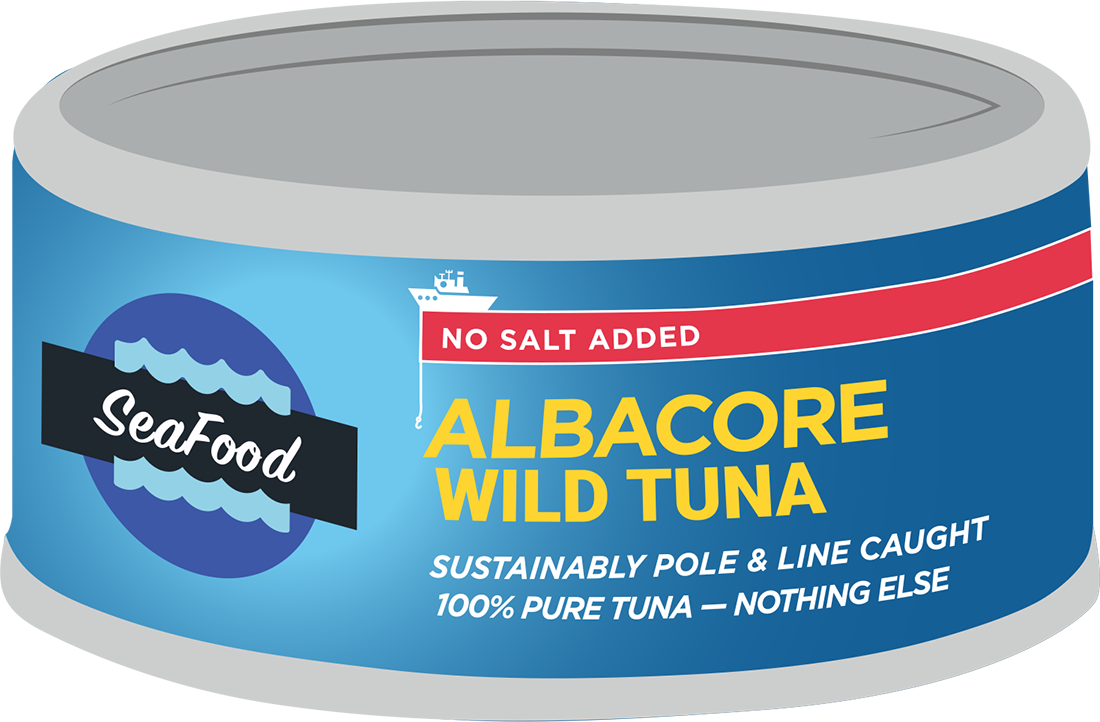
Seafood Label Claims
Because the same species may have several commonly known names, FDA created The Seafood List to assist producers and consumers in accurately identifying seafood. The Seafood List establishes various names for common seafood products called “Acceptable Market Names.” FDA states that “[a]n acceptable market name fairly represents the identity of the species to U.S. consumers because it is not confusingly similar to the name of another species and because it is not otherwise misleading.”
The FSIS defines farm-raised fish as fish “grown in controlled conditions, within an enclosed space, as on a farm.” USDA guidance further indicates that this term is intended to encompass a variety of fish-raising methods, including methods that involve raising fish in pools and floating cages. See USDA’s regulation for more information.
This term means that a product has been produced according to the standards in the Organic Foods Production Act (OFPA) and certified by USDA’s National Organic Program. A food label may only use the “USDA Organic” seal if the food is actually certified organic.
Organic products are grown and processed according to federal standards on soil quality, pest and weed control, and use of chemical fertilizers, among other areas. According to USDA, “[o]rganic producers rely on natural substances and physical, mechanical, or biologically based farming methods to the fullest extent possible.”
The amount of organic ingredients in a food matters for labeling. A “100 percent organic” product may only have ingredients that are organic. A food that has at least 95 percent organic ingredients may have the term “organic” on its label if the organic ingredients are specifically noted somewhere on the package. For more information on organic ingredient labeling, see the USDA Organic Labeling Standards website.
“Salt” and “sodium” are not necessarily interchangeable terms under FDA regulations. “Salt” specifically refers to sodium chloride. The claim “no salt added” may be used if no salt is added during processing; similar foods are usually processed with salt; and, if the food is not sodium free, the label also includes a statement that it is “not a sodium free food” or “not for control of sodium in the diet.” See the FDA’s regulations for more information.
This term refers to the method of catching fish one at a time using a fishing pole, rather than through trawling (using a large net that often results in overfishing and unintended harvest of unwanted species). This term is not regulated by any government agency. The International Pole & Line Foundation has more information on pole & line fishing on their website.
This term is not defined by any government agency. However, it can be certified by third parties, such as the Aquaculture Stewardship Council or Best Aquaculture Practices. Generally, this term means the fish were raised in a man-made environment or enclosure, with special considerations paid to the operation’s environmental impacts.
This term is not regulated by the government, but is generally used by tuna brands to claim that their product has been caught from abundant target species populations in amounts that promote the stock’s long-term health. This term also implies that the catch methods being used limit ecosystem impact. See FoodPrint’s resource on this term for more information.
This claim is not defined by any government agency. However, it can not be used in a false or misleading way. Several nongovernmental third-party certifiers specify sustainability standards. For example, the Marine Stewardship Council says that their certification of sustainability ensures that the seafood was caught in a way that does not deplete the species’ population or otherwise cause harm to other animals and the environment. Another third-party certifier, the Fishery Solutions Center, defines sustainable fishing activities as those that do not cause or lead to “undesirable changes” in biological diversity or ecosystem structure. The term “caught” indicates that the fish were caught in the wild as opposed to being grown in a fishery.
Government agencies have not regulated this claim except to ensure that it cannot be used in a way that is false or misleading. Some third-party certifiers specify standards for what “sustainably harvested” means. For example, the Fishery Solutions Center defines this as seafood that has been “harvested without reducing the stock biomass from year to year, assuming that all environmental conditions remain the same.”
Retailers and producers are now required to label whether seafood is “wild caught” or “farm raised,” as part of Country of Origin Labeling. Under federal regulations, wild fish and shellfish are “naturally-born or hatchery-originated fish or shellfish released in the wild, and caught, taken, or harvested from non-controlled waters or beds; and fillets, steaks, nuggets, and any other flesh from a wild fish or shellfish.”
Resources on Seafood Labels
Seafood: State-Level Catfish Labeling Laws
There is a national retail-level country-of-origin labeling standard for seafood, however some states also regulate seafood labeling. This research article compares and contrasts Tennessee, Louisiana, Arkansas, Mississippi, Alabama and Kansas state catfish labeling laws.
Plant-Based Proteins Food Label Overview
Many consumers are choosing to incorporate plant-based proteins into their diet. Consumers may be buying more plant-based foods because of concerns with animal welfare or climate change, anxiety about added antibiotics and hormones, to add more healthy options to their diet, or just to try new foods. FDA and USDA have both recognized increased interest in plant-based eating and developed recommendations for healthy plant-based diets.
Well-known brands are now offering more plant-based options and innovative plant-based foods are becoming mainstream. With the rise in plant-based options, it is important to know the differences among certain label claims. Below are some of the common claims consumers may see on plant-based proteins.
Interactive Label
Plant-Based
FDA has not defined this term (other than generally prohibiting false and misleading labels), but the claim generally indicates a product that is made mostly or entirely from plants, rather than meat or other animal products. USDA has also not defined this term, but has used it to mean the food is vegetarian.Vegan
FDA does not define this term, but it is generally used to mean foods made without any animal products such as meat, but also milk, honey, or eggs. There is a third-party certification for vegan products promulgated by the group Vegan Action that is used to indicate that a product does not contain animal products or byproducts and has not been tested on animals.33% Less Saturated Fat
If a label has the term “reduced fat,” “less fat,” or “lower fat,” it should clearly state both the reference food that it is comparing itself to, and the percentage by which the fat is reduced. At minimum, if a food has this label it should contain 25 percent less fat than the reference food to bear this label.No Animal Hormones or Antibiotics
Plant-based foods may still contain animal products like milk, cheese, or eggs. Some products may contain both plant-based ingredients and meat from animals in the same dish. Therefore, claims about animal hormones and antibiotics may appear on plant-based product labels. Terms like “no hormones added” and “no antibiotics added” may be used if the producer submits specific documentation to FSIS. See the full description of these claims in the list below.Bioengineered
Bioengineered foods are “[t]hose that contain detectable genetic material that has been modified through certain lab techniques and cannot be created through conventional breeding or found in nature,” as defined in the National Bioengineered Food Disclosure Standard. Beginning in 2022, certain foods as established by the USDA Agricultural Marketing Service will need to disclose the presence of bioengineered ingredients.
Plant-Based Foods Label Claims
Bioengineered foods are “[t]hose that contain detectable genetic material that has been modified through certain lab techniques and cannot be created through conventional breeding or found in nature,” as defined in the National Bioengineered Food Disclosure Standard. Beginning in 2022, certain foods as established by the USDA Agricultural Marketing Service will need to disclose the presence of bioengineered ingredients.
This term is not defined by USDA or FDA. It is generally used to note that the food or meal does not contain meat. “Meatless” is likely used the same as “vegetarian,” but meatless meals may still contain eggs or milk.
This term is not defined through federal regulation, but it is still subject to the general requirement that food labels not be false or misleading.
Plant-based foods may still contain animal products like milk, cheese, or eggs. Some products may contain both plant-based ingredients and meat from animals in the same dish. Therefore, claims about animal hormones and antibiotics may appear on plant-based product labels.
Terms like “no hormones added” may be used if the producer submits to FSIS-specific documentation. Documentation must show that the producer can “[ensure] the animals are raised without hormones or steroids” and include a written description of raising standards and a written description of how the producer keeps the animals and meat separate from other products. Poultry may not be given additional hormones. So, this claim cannot be used for eggs or poultry unless it is accompanied by language stating “federal regulations prohibit the use of hormones” or some other qualifying language approved by FSIS.
The term “no antibiotics added” may be used if the producer provides sufficient documentation to the FSIS showing that the animals were raised without antibiotics.
In some cases, hormones or antibiotics may be given to an animal to aid in gestation. For offspring of these animals, these hormones or antibiotics were administered before birth. Products made from animals that received hormones before birth may still be labeled “raised without added hormones,” “no added hormones administered,” etc.
This term means that a product has been produced according to the standards in the Organic Foods Production Act (OFPA) and certified by USDA’s National Organic Program. A label may only use the “USDA Organic” seal if the food is actually certified organic.
Organic products are grown and processed according to federal standards on soil quality, pest and weed control, and use of chemical fertilizers, among other areas. According to USDA, “[o]rganic producers rely on natural substances and physical, mechanical, or biologically based farming methods to the fullest extent possible.”
The amount of organic ingredients in a food matters for labeling. A “100 percent organic” product may only have ingredients that are organic. A food that has at least 95 percent organic ingredients may have the term “organic” on its label if the organic ingredients are specifically noted somewhere on the package. For more information on organic ingredient labeling, see the USDA Organic Labeling Standards website.
FDA has not defined this term (other than generally prohibiting false and misleading labels), but the claim generally indicates a product that is made mostly or entirely from plants, rather than meat or other animal products. USDA has also not defined this term, but has used it to mean the food is vegetarian.
FDA has not defined this phrase, but explains that protein can come from both animal sources and plant sources. Plants that provide protein are beans, peas, nuts, seeds, soy products, and whole grains. On a label, “plant protein” likely means that the food contains protein from plants. The ingredient list will provide more detail on which plants are in the food.
If a label has the term “reduced fat,” “less fat,” or “lower fat,” it should clearly state both the reference food that it is comparing itself to, and the percentage by which the fat is reduced. At minimum, if a food has this label it should contain 25 percent less fat than the reference food to bear this label. More information is available in FDA regulations.
FDA does not define this term, but it is generally used to mean foods made without any animal products such as meat, but also milk, honey, or eggs. There is a third-party certification for vegan products promulgated by the group Vegan Action that is used to indicate that a product does not contain animal products or byproducts and has not been tested on animals.
FDA does not define this term, but it generally means the product does not contain animal muscle or proteins. This term may mean there are animal products in the ingredients like milk, eggs, or honey.
Q&As
-
What is the difference between “plant-based” and “vegan”?
Commonly, “vegan” is understood to indicate a food made with no animal products and “plant-based” means a food that contains primarily plants but may have some animal products. However, neither “plant-based” nor “vegan” have specific legal definitions so there are many instances where a plant-based product is also a vegan product. There are also instances where a plant-based product includes animal products, like a meatless chik’n nugget that includes egg as an ingredient. Because there is no legal definition of plant-based, the manufacturer can call the nugget “plant-based” because it is made almost entirely out of plants (even though it contains an animal product). Whether the product could be labeled “vegan” is still unclear because of the lack of specific legal definitions. Even without established definitions, a label cannot be false or misleading. If a product contained egg but was labeled “vegan,” this could be considered misleading because most people understand “vegan” to mean the food does not contain any animal products. However, FDA has not issued guidance on this topic.
Back to questions
-
Who decides whether a food is vegetarian, vegan, or plant-based?
There are several ways to establish whether a food is vegan, plant-based, or vegetarian. These terms do not have specific legal definitions, so manufacturers have a lot of discretion to decide whether to label their products vegan, plant-based, or vegetarian. However, a manufacturer cannot use a false or misleading label on their food, as established by the Food, Drug, and Cosmetic Act—a law enacted by Congress and enforced by FDA. FDA does not require preapproval of most food labels, including those on vegan and plant-based foods, before foods hit the shelf. However, FDA can prosecute manufacturers for misbranding food if their labeling is false or misleading. Additionally, FDA can create a regulatory definition of vegan, plant-based, or vegetarian which would require manufacturers to meet specific requirements for these labels. FDA has not yet created these definitions but has indicated it plans to develop guidance in the near future. In some instances, consumers that were misled into purchasing a product due to misleading or false labeling may even sue a manufacturer in court, in which case the court would decide whether the label was false or misleading. Third-party certifiers, which are nongovernmental groups, may also certify a food as vegan, plant-based, or vegetarian according to the group’s certification standards. An example of this is the Plant Based Foods Association, which certifies food as plant-based.
Back to questions
-
What are common examples of plant proteins?
FDA lists, among other sources, beans, peas, nuts, nut butters, seeds, and soy products as sources of plant protein.
Back to questions
Additional resources
Eating Vegetarian
This USDA website contains several links to learn about how to have a healthy plant-based diet.
The 2020-2025 Dietary Guidelines for Americans
The Dietary Guidelines for Americans are issued every five years by USDA and the Department of Health & Human Services. The 2020-2025 guidelines include advice for healthy plant-based eating for every age and life stage.
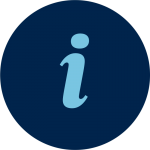 Overview
Overview
 Beef & Pork
Beef & Pork
 Poultry & Eggs
Poultry & Eggs
 Seafood
Seafood
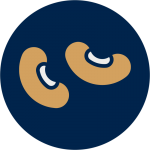 Plant-Based Food
Plant-Based Food
